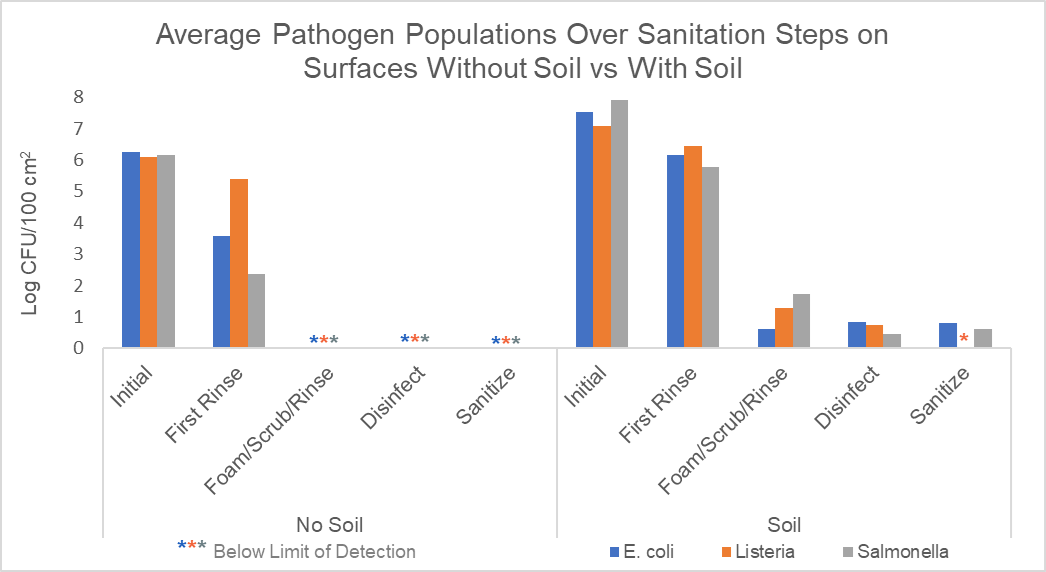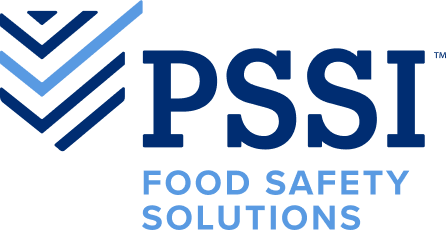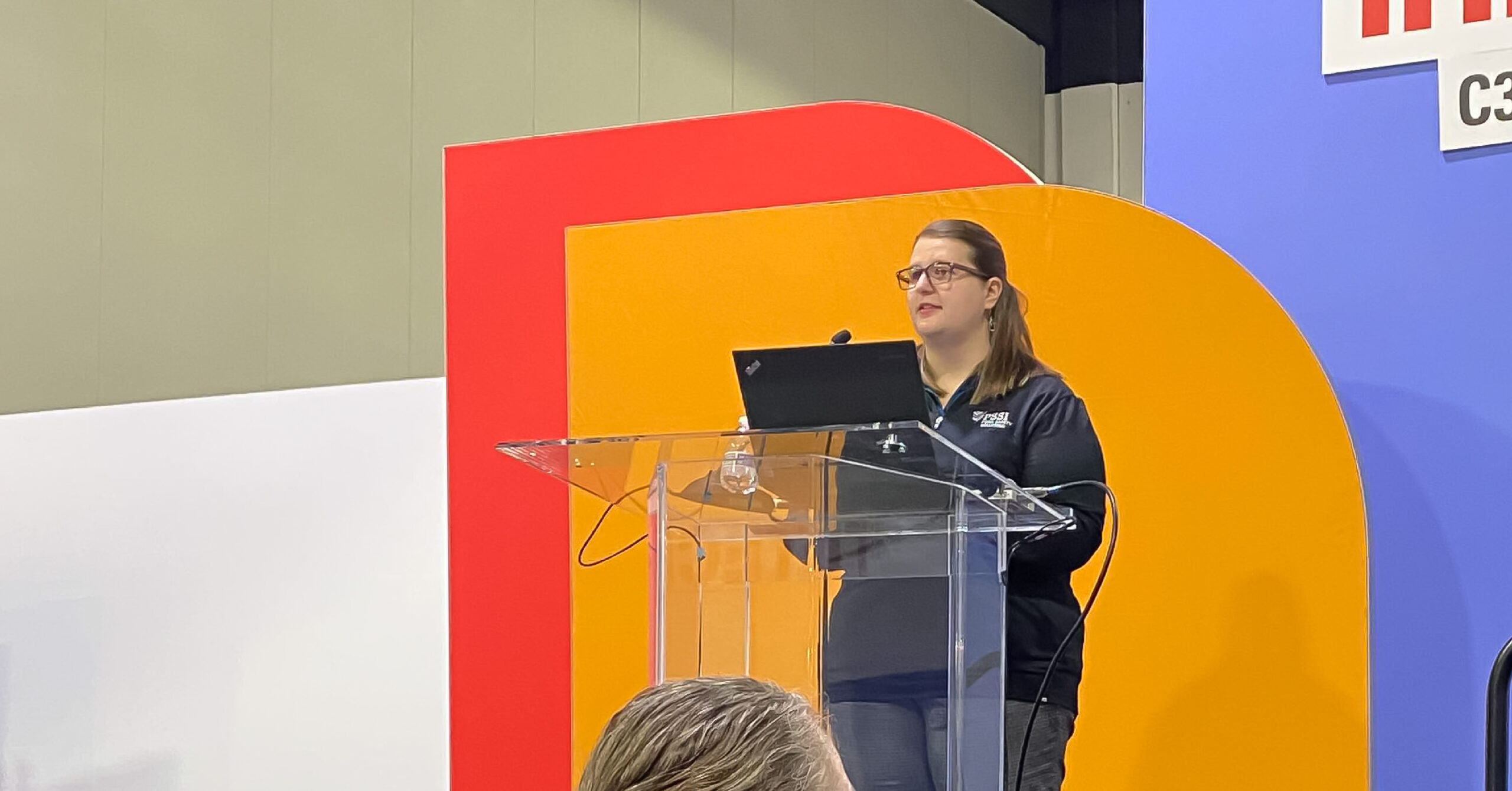Validation is proving the legitimacy or accuracy of something, which is important for the overall effectiveness of the food safety system, including sanitation processes. In an ongoing effort to put science behind what we do, this study objective was to gather data to support that 8-Steps of Sanitation is effective in removing foodborne pathogens from typical food production surfaces in the absence and presence of food residue. Three separate stainless steel tables were either inoculated with E. coli O157:H7, Salmonella, or Listeria monocytogenes in food residue or without food residue at four sites: table top, underside of table, upper framework, and lower framework. After inoculation, our sanitation process was performed on all tables utilizing Safe Foods Chemical Innovation chemistry.
Results showed the sanitation process removed >5 logs of the three pathogens when applied to a clean surface containing no food residue (no soil) and >5 logs from most protein-contaminated (soil) stainless steel table surfaces (Figure 1). Where there were residual pathogen counts after sanitation, there was also visible protein noted on the area where the swab was taken. For this study we did not pre-op the surfaces before taking swabs, but this highlights why the directive during the pre-operational inspection is to verify that all surfaces are visibly clean.
Figure 1. Comparison of pathogen population reduction on stainless steel surfaces over the PSSI sanitation process in the absence and presence of food residue.

Our research demonstrates that when performed correctly, detergent application and second rinse are the most critical for the removal of microorganisms. Simply, the foam/scrub/rinse steps of the process are fundamentally the soil and microorganism removal steps. These results highlight the importance of having proper foam consistency, 100% foam coverage on all surfaces, proper chemical contact time, and lastly, not cross-contaminating during final rinse.
Further, our research also shows that when soil is left on the surface after final rinse it will negatively affect the ability for disinfection and sanitizing in subsequent steps, as demonstrated by the results of the upper framework in Figure 2. We observed that if microorganisms are harboring in soils on surfaces, it will be a challenge for disinfectants and sanitizers to effectively kill them.
Figure 2. Comparison of E. coli O157:H7 populations on soiled table top and upper framework of stainless steel table during PSSI sanitation process.

An effective sanitation process is a critical aspect to control microorganisms, enabling food processors and producers to maintain equipment and facilities free from soils and foodborne pathogens. When used in conjunction with other food safety system programs, PSSI’s 8-Steps of Sanitation offers a validated process to consistently meet food safety and quality objectives, comply with regulatory requirements, and protect consumers.

